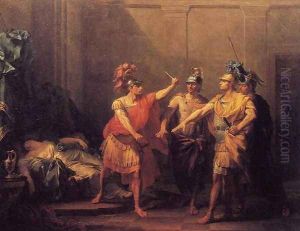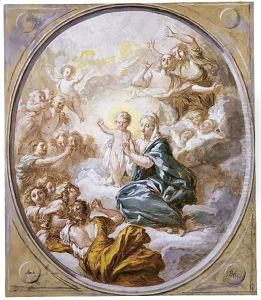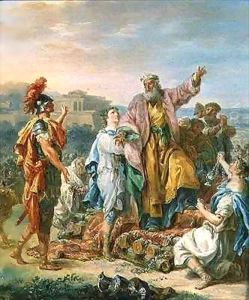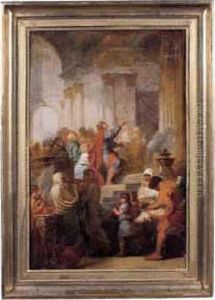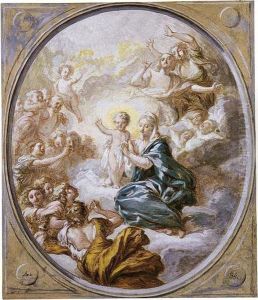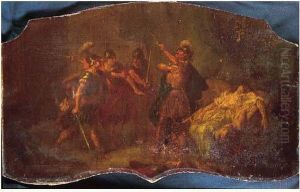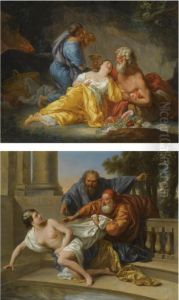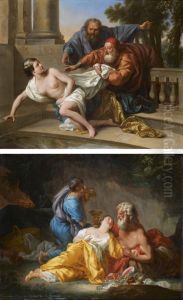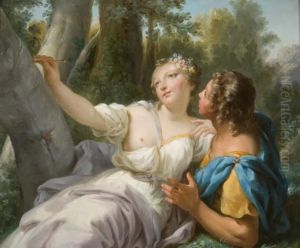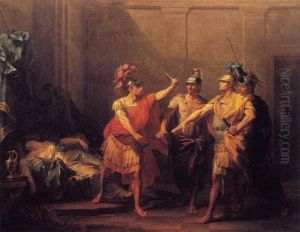Jacques-Antoine Beaufort Paintings
Jacques-Antoine Beaufort was a French painter, known for his history paintings and religious works. Born in 1721, Beaufort showed an early inclination towards art. He received his training in the studio of François Boucher, a renowned Rococo artist, which influenced his early style. However, as his career progressed, Beaufort's work began to diverge from the Rococo sensibility, moving towards a more Neoclassical approach, which was gaining popularity at the time.
Beaufort's paintings often featured classical themes, with an emphasis on clarity of form and a subdued palette, which was in contrast to the more frivolous and colorful Rococo style. He was particularly adept at capturing the emotional depth of his subjects, which earned him a reputation as a skilled storyteller through his art.
Despite his talents, Jacques-Antoine Beaufort did not achieve the same level of fame as some of his contemporaries. He worked primarily for private patrons and did not receive as many public commissions. This, combined with the turbulent political climate of France in the late 18th century, meant that his work was somewhat overshadowed by the social and political upheavals of the time.
He lived through the Age of Enlightenment, which was a period that valued reason and individualism, and this is reflected in some of his works that emphasize the moral and heroic aspects of their subjects. Beaufort's work was marked by its emotional realism and attention to detail, characteristics that have allowed his paintings to be appreciated for their historical and artistic value.
Jacques-Antoine Beaufort died in 1784, leaving behind a body of work that captures the transitional period of French art from Rococo to Neoclassicism. His paintings remain a testament to his skill and the artistic movements of his time.
